Content
The panicle hydrangea Dentel de Gorron was discovered in Asia. In the wild, it can be found in the East, in natural conditions the shrub reaches 4 m. Thanks to the work of scientists, the bred plant can grow both in the wild and at home. But for abundant flowering, she needs to create comfortable conditions and know the rules of growing.
Description of hydrangea paniculata Dentel de Gorron
The panicle hydrangea Dentel de Gorron can grow in temperate regions. Subject to agricultural technology, the shrub grows from 2 m or more. In spring, dark olive leaves of an oblong shape appear on thin, flexible, gray-brown shoots.
In summer, large paniculate inflorescences of snow-white, greenish, pink or cream flowers appear on the shoots. The color depends on the place of growth and the quality of the soil. Hydrangea blooms for a long time, lasts the entire warm period.
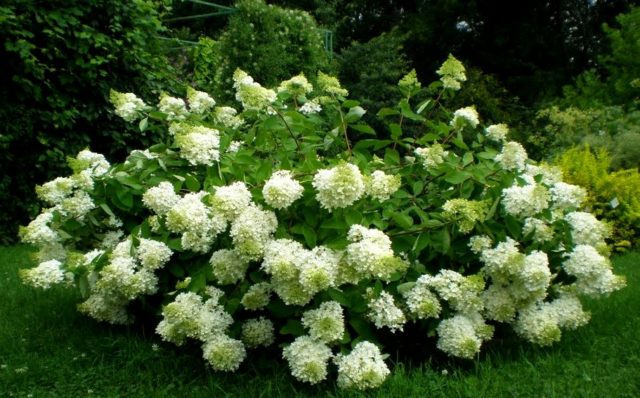
The variety forms a powerful, spreading bush.
Hydrangea Dentel de Gorron in landscape design
Hydrangea paniculata dentelle de gorron is widely used in landscape design. Thanks to its beautiful and long-lasting flowering, hydrangea goes well with such trees and shrubs as Canadian hemlock, yew, tulip liriodendron, scumpia, boxwood. In the flower garden, hydrangea Dentel de Gorron is combined with phlox, hosta, Japanese anemone, mountain goat weed, creeping tenacious.
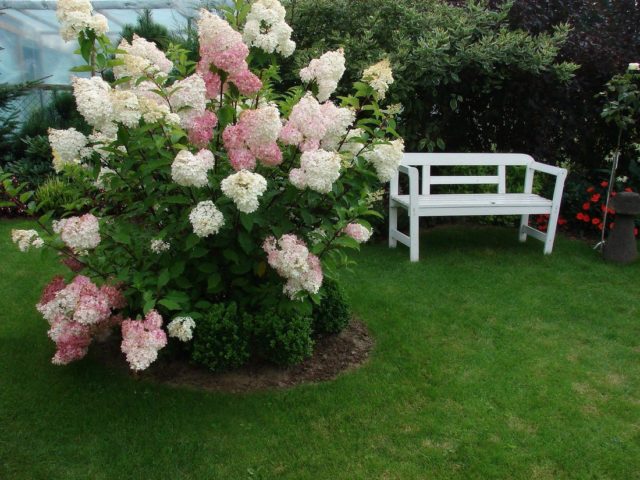
Hydrangea will create coziness in the recreation area
Winter hardiness of hydrangea Dentel de Gorron
Hydrangea Dentel de Gorron has an average cold hardiness. It can withstand frosts down to -10 ° C without shelter. Therefore, in regions with harsh winters, hydrangea must be covered for the winter.
Planting and caring for hydrangea Dentel de Gorron
It is better to purchase a seedling for planting from trusted suppliers. Healthy planting material should be free of signs of damage and rot, have 3 healthy shoots and well-grown roots.
Selection and preparation of the landing site
Hydrangea Dentel de Gorron prefers to grow in partial shade, on fertile, well-drained soil. When grown in the open sun, foliage burns, dries up and falls off. When grown on depleted soil, the plant stops growing and does not release peduncles.
Hydrangeas are planted in spring and autumn - in the southern regions, only in spring - in cities with an unstable climate.
Landing rules
In order for the Dentel de Gorron hydrangea to please with its flowering for many years, you need to correctly plant a young seedling. For this:
- Dig a hole 40x30 cm in size.If several specimens are planted, the interval between plantings should be at least 1.5 m.
- A hydrangea seedling is soaked in a root preparation for half an hour.
- A 10-cm layer of drainage is laid at the bottom of the hole and sprinkled with nutritious soil.
- The roots of the plant are straightened and set in the center.
- The hole is filled with soil, trying not to leave airspace.
- The soil is compacted, spilled and mulched.
After planting the Dentel de Gorron hydrangea, proper care is necessary, which consists in watering, feeding, removing weeds, loosening and mulching the soil.
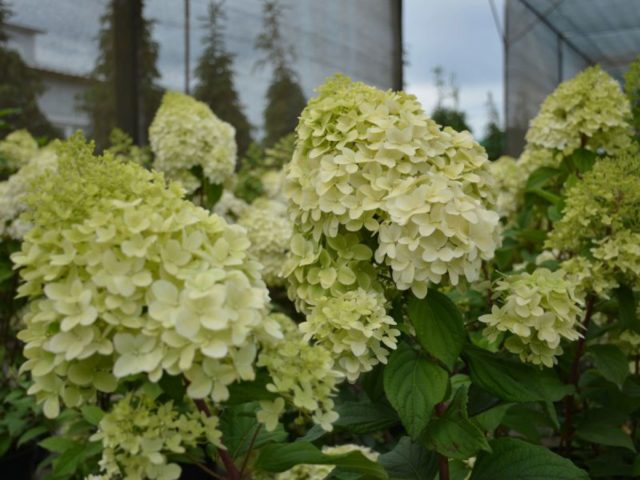
The plant prefers to grow in partial shade
Watering and feeding
Hydrangea Dentel de Gorron is a moisture-loving plant, so watering should be abundant. Irrigation is carried out in the morning or in the evening. At least a bucket of water is poured under each adult plant. In order not to harm during watering, you need to heed the advice of experts. Some irrigation features:
- watering hydrangeas Dentel de Gorron is carried out only with warm, settled water;
- stagnant water leads to root rot, tap water saturates the soil with lime, which adversely affects the hydrangea;
- irrigation is not carried out at noon;
- when watering, moisture should be avoided on the leaves and buds.
After watering, the soil is loosened and mulched. Mulch will protect the roots from sunburn, stop moisture evaporation and the growth of weeds. Mulch, when decomposed, will become an additional organic fertilizing. Straw, fallen leaves, peat, needles or bark are used as mulch.
Fertilizing hydrangeas is necessary for long and abundant flowering. Hydrangea Dentel de Gorron is fertilized several times a season:
- after hibernation, organic fertilizers enriched with nitrogen are applied;
- during the formation of buds, the plant needs: urea, superphosphate and potassium;
- during the flowering period, a mineral complex is introduced under the bush;
- in the fall, a month before wintering, the plant is fertilized with potash fertilizers or wood ash.
Pruning hydrangea Dentel de Gorron
Pruning hydrangeas Dentel de Gorron is done in spring and autumn. After the snow melts, before sap flow, sanitary pruning is carried out, removing damaged, not overwintered shoots. In the fall, remove excess root shoots and cut flower clusters until 4 buds are preserved. This procedure will increase winter hardiness and allow you to quickly recover from hibernation.
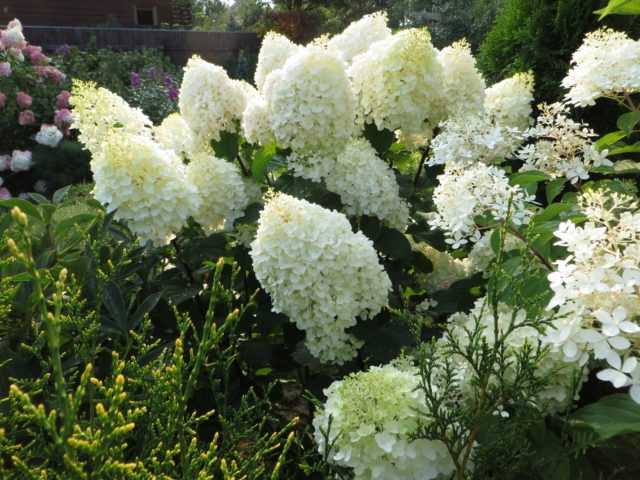
For abundant flowering, it is necessary to promptly remove faded inflorescences
Preparing for winter
In the southern regions, the Dentel de Gorron hydrangea can overwinter without shelter, but in cities with cold winters it is sheltered. To do this, watering is reduced, potash is added, the soil is covered with peat, straw or fallen leaves.
The shoots are neatly connected to each other, tied with twine and bent to the ground. Top of the hydrangea Dentel de Gorron is covered with agrofibre and burlap. So that the strong wind does not take away the shelter, it is fixed with metal pegs or bricks.
Reproduction
Hydrangea paniculata hydrangeapaniculata dentelle de gorron propagates by seeds, branches, cuttings and bush division. All methods are effective and bring the long-awaited result.
Seed propagation is a laborious and time-consuming method. Seeds for sowing are purchased only in specialized stores, since seeds retain their germination capacity for only 1 year. Rules for planting hydrangea seeds Dentel de Gorron:
- Seeds are sown in separate containers with nutrient soil.
- For better germination, the crops are covered with foil or glass and removed to a warm, bright place.
- After the appearance of the cotyledon leaves, the first pick is carried out. During transplantation, the taproot is pruned from the seedlings so that the plant begins to grow lateral roots.
- The second pick is carried out after the appearance of these sheets.
- After transplanting, the seedlings are placed in a warm place where the temperature does not drop below + 14 ° C and does not rise above + 20 ° C.
- For rapid growth, seedlings are watered and fed.
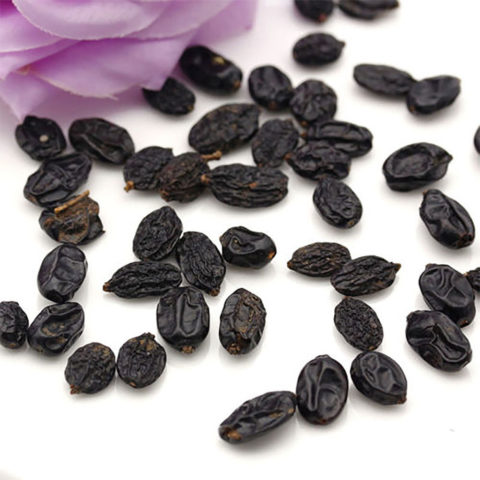
It is better to purchase seeds from trusted suppliers.
Cuttings carried out in the fall - cuttings are cut from a healthy shoot and processed in a growth stimulator. At an acute angle, the planting material is buried in the nutrient soil. For better root formation, cover the container with a glass jar. Rooted cuttings are planted in spring or autumn, depending on climatic conditions.
Dividing the bush - this procedure is carried out during the transplantation of an adult plant. The required number of divisions are separated from the mother bush, the cut site is disinfected with charcoal or brilliant green. Each part should have 3 healthy shoots and well-developed roots. The planting of the divisions in a new place is carried out immediately after separation from the mother bush.
Reproduction by branches Is another method. A healthy shoot growing closer to the ground is chosen on the bush. A shallow trench is dug near it and the prepared branch is laid so that the top remains above the ground. The trench is buried, spilled and mulched. The rooted shoot is detached from the mother bush after a year.
Diseases and pests
Hydrangea Dentel de Gorron is resistant to pests and diseases. If you do not follow agricultural techniques, then the plant can become infected with the following ailments:
- Chlorosis. The disease appears due to a lack of moisture and iron in the soil. The disease is manifested by discoloration of the leaf plate, arrest of growth and development. The fight against chlorosis consists in spraying the plant with iron-containing preparations.
When infected, foliage becomes discolored
- Powdery mildew. Appears at high temperature and humidity. The leaf plate and the stem are covered with a mealy bloom, which is quickly removed with a finger.
Bordeaux liquid will help get rid of the disease
Also, insect pests often appear on the plant: slugs, snails, spider mites and aphids. In order to prevent the death of the bush, the following methods of protection are used from parasites:
- Against slugs, the plant is sprayed with ammonia (250 ml per bucket of water).
- Spider mites are exterminated with copper sulfate (30 g per 10 liters of water).
- To get rid of aphids will help the drug "Oxyhom", diluted strictly according to the instructions.
Conclusion
Hydrangea Dentel de Gorron is a flowering, perennial shrub. Subject to agricultural technology, the plant will be an excellent addition to landscape design and will delight you with long flowering. Knowing the rules of care and reproduction, you can create a unique blooming oasis of lush hydrangea in your summer cottage.










